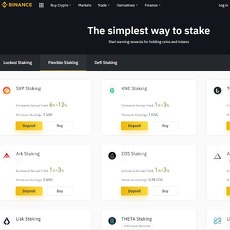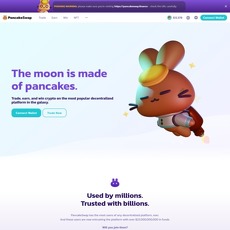Proof of Stake, Cardano Staking and Ethereum Staking
There is no doubt that staking expands the financial scope of crypto networks and their native tokens. To investors and crypto holders, it incorporates one of the fundamentals of banking operations while providing high yield earning opportunities lacking in traditional financial systems. As for crypto networks, it offers a means of enabling organic growth and establishing the validity of their blockchains. In this guide, we will explore the essence of staking cryptocurrency, identify the various types, and introduce you to the factors that should govern your search for an ideal staking platform. Subsequently, we will highlight the top staking websites as well as the methodology used to pick them.
What Is Proof of Stake?
Staking is integral to blockchain networks that rely on the Proof of Stake (PoS) and Delegated Proof of Stake (DPoS) consensus mechanisms. The fundamental workings of these two protocols require network participants to deposit or stake an amount of the blockchain’s native coin to qualify to be voted or randomly nominated to validate transactions and earn rewards in the form of newly minted coins. Unlike the Proof of Work (PoW) used in the bitcoin blockchain, PoS and DPoS are power efficient and offer a higher level of scalability.
Here, validators agree to lock up their coins for a chance of being picked to create a new block and ultimately earn new coins as rewards. Usually, those who lock large amounts of assets often get picked as validators. To ensure that validators have the interest of the network at heart at all times, the staking protocol is designed to slash a fraction of locked coins whenever it perceives that the validator is looking to initiate double-spending or attack the integrity of the network.
As a result of this meticulously designed system, staking has become a very critical and profitable venture for crypto holders. Unsurprisingly, a lot of crypto participants are opting for staking as a means of earning extra income. Naturally, the high demand for staking tools and platforms. While some of the introduced solutions have preserved the fundamentals of staking, some have moved to simplify the process and allow easy access to staking rewards. In the next section, we will zero in on staking pools, cold staking infrastructures, and exchange-based staking programs.
Staking Pools
Like mining pools, staking pools allows two or more entities to pool resources together to enhance their chances of earning new coins. The difference is that staking pools let a network of crypto holders combine their holdings to increase the probability of emerging as validators on blockchains that implement staking. Subsequently, the rewards earned are distributed according to a predetermined formula, which usually takes into account the amount each participant contributes. In other words, a staking pool is a network of coin holders looking to combine their staking power to become validators on blockchain networks and jointly earn rewards.
Staking pools are vital entities because they provide opportunities for crypto holders with little staking capital to participate in staking activities. Without staking pools, this opportunity will likely be exclusive to a handful of investors with big stashes of cryptocurrency. Just as it is with mining pools, staking pools often impose conditions to ensure that there are no disputes. Normally, these pools have lockup periods, withdrawal policies, and minimum deposit limits.
Cold Staking
Cold staking is a more complex and siloed method of becoming validators on blockchain networks. Here, you do not need to merge your staking power or deposit coins in a pool. Instead, it is suitable for validators with a large number of coins to stake. As its name implies, cold staking allows validators to lock their funds on offline wallets and still participate in staking. Hence, you can ensure that your funds are impervious to security threats while you retain the ability to contribute to the day-to-day governance activities of blockchain networks. Note that a validator will stop receiving rewards as soon as he or she moves the staked coins in the offline wallet. It is worth mentioning that this method is ideal for individuals and entities that are looking to become long-term validators.
Exchange Staking Programs
Exchanges are increasingly playing vital roles in the governance of blockchain networks by offering staking products to users as an extra source of income. The goal here is to make staking services readily available to everyone. And so, the minimum deposit limit is similar to what you will find on staking pools. However, users tend to enjoy the added benefits of exchange platforms while partaking in staking activities.
How To Calculate Staking Rewards
The mode of calculating staking rewards often relies on several factors, depending on the protocol governing this activity on each blockchain network. In some cases, some blockchains adjust the reward allocated to validators on a block-by-block basis. In other words, the blockchain takes into account varying factors to determine the number of coins released as compensation for locking up coins and creating new blocks. Some of the factors considered are the number of coins staked, how long the validator has actively contributed to the network’s validation process, the total of coins locked on the blockchain, and the inflation rate.
In contrast, some blockchains have a fixed percentage set as the reward sharing formula. In this case, validators have a rough estimate of what they expect to earn. Undoubtedly, this method attracts more participants since it utilizes a transparent system, which allows validators to predict their earnings and calculate the profitability of their staking activities beforehand.
How to Choose the Right Staking Platform or Pool Provider?
Having explored all of the fundamentals of staking and related solutions, the next thing is to identify the factors that should help you when researching the best staking solution for you.
The Blockchain Network or Cryptocurrency
As explained earlier, only specific blockchain networks support staking. It is imperative to check that you own the coin of a PoS or DPoS- powered blockchain. If not, then you have to exchange your current holdings for one or more crypto with staking capabilities. For instance, bitcoin uses PoW. Hence, bitcoin holders must trade a fraction of their holdings to cryptocurrencies like EOS and Tron before they can earn rewards through staking.
The Method Used to Calculate Reward
Once you factor in the staking requirement mentioned above, the next step is to determine the various ways blockchains calculate staking rewards. This process comes in handy when trying to pick the most profitable staking programs. It is advisable to have a rough estimation of the amount you expect to earn in the long run. By doing so, it becomes easier to determine the most profitable way to allocate funds to one or more staking networks.
The Value of Your Capital
The amount you intend to stake, to a large extent, determine the staking solution you should choose. Large investors will find cold staking a suitable option. On the other hand, participants with low staking input will have no other choice but to opt for staking pools and exchange-based products, especially if they are serious about earning rewards. This notion also applies to individuals who are looking to capitalize on multiple staking programs. The wide array of options available on some pools and exchanges is ideal for people that fall into this category.
The Level of Risk You Are Willing to Take
Risks come into play when you delegate your staking power to pools and exchanges because you have to deposit your funds with a third-party. If you are opting for intermediaries, it is imperative to understand the risk involved and take into account all of the things beyond your control that could go wrong. For those that are risk aversive, cold staking, which requires offline storage facilities, is a suitable approach to staking.
The Security of The Pool or Exchange
For those who have no other option but to adopt staking pools and other intermediaries, it is vital to carry out security checks. In other words, research the security infrastructure of the platforms you are considering before reaching a concrete decision. Here, it is critical to analyze the safety nets implemented on the website, research its reputation, and identify policies that come into effect when attackers successfully breach its security system.
How Long You Intend to Stake Cryptocurrencies
We stated earlier that long-term validators should consider cold staking over other options. This is because it guarantees that locked funds are safe regardless of how long they are staked on blockchain networks. Conversely, short-term investors can go for the more flexible alternatives.
The Lockup Period
When it comes to staking, have it at the back of your mind that blockchain networks and staking solutions usually impose lockup periods. Hence, specified timeframes must elapse before you can withdraw your cryptocurrencies. The failure to adhere to this clause will automatically make you ineligible to earn rewards. While this is a given, the lockup periods specified on each platform differs. It is your responsibility to check for details and see if it aligns with your staking strategy. It is when you have these details at your fingertips that you can make quality decisions.
Your Level of Blockchain Expertise
Validating transactions on blockchains is not a simple task. It involves technical processes that sometimes entails that you take on governance duties. You must ensure that you create and maintain a blockchain node, which requires your computer to connect to the internet permanently. If these requirements are beyond you, then it is advisable to go for intermediaries. These entities do all the dirty work, while participants only need to deposit crypto assets. Thus, it is vital to consider your blockchain expertise and the availability of staking resources before choosing to either stake on your own or join a pool.
The Possibility of Flexible Lockup Periods
To make staking attractive, some exchanges have introduced flexible staking products that let investors withdraw their funds whenever they want. These products do not come with restrictions as participants do not have to forfeit accrued interests or earnings. However, note that the rewards applicable to such offerings are relatively lower than staking options with lockup periods.
The Estimated Earnings Promised on Exchanges or Pools
It is common for exchanges and pools to provide the estimated annual interest rates earnable when users stake their coins via their platforms. You ought to compare the reward distribution threshold of each of the solutions you are considering. Doing this helps you choose the platform with the most attractive rates.
The Number of Coins Supported
Opting for an intermediary should expose you to a broad array of options as regards crypto staking products. Ideally, you could go for those which allow users to stake more than one cryptocurrency. The more options you have access to, the higher your chances of establishing highly rewarding crypto staking business.
The Customer Support of The Pool or Exchange
As always, we are very particular about user experience. Therefore, we always tell crypto practitioners to ascertain that they have access to topnotch customer support systems. The same applies to staking pools and exchanges. Endeavor to research the proficiency of the pool as regards customer relations. This will guarantee that you get help whenever you are in a difficult situation. It is not just critical to get help. The timing also matters. Hence, it is advisable to opt for a platform with multiple means of engaging users and a knack for responding to queries quickly.
How Did Cryptolinks Pick Its Top Crypto Staking Platforms?
From what you have learned so far, you will agree that it is not as easy as it seems to venture into crypto staking. Therefore, we have not only created a comprehensive guide but also gone further to handpick the best platforms offering staking solutions. To do this, we opted for a hands-on approach to researching listed solutions and identifying their advantages and flaws.
We explored the reputations and the security systems of these solutions. Subsequently, we ascertained that they have the tools necessary to enable a fast and easy way for investors to capitalize on the rewards systems of blockchain networks. This research includes a thorough evaluation of the supported coins, the reward sharing mechanics, and the customer support systems. In the end, we were able to come up with a list of formidable platforms with crypto staking options. Make sure you read the reviews below before opting for one.











